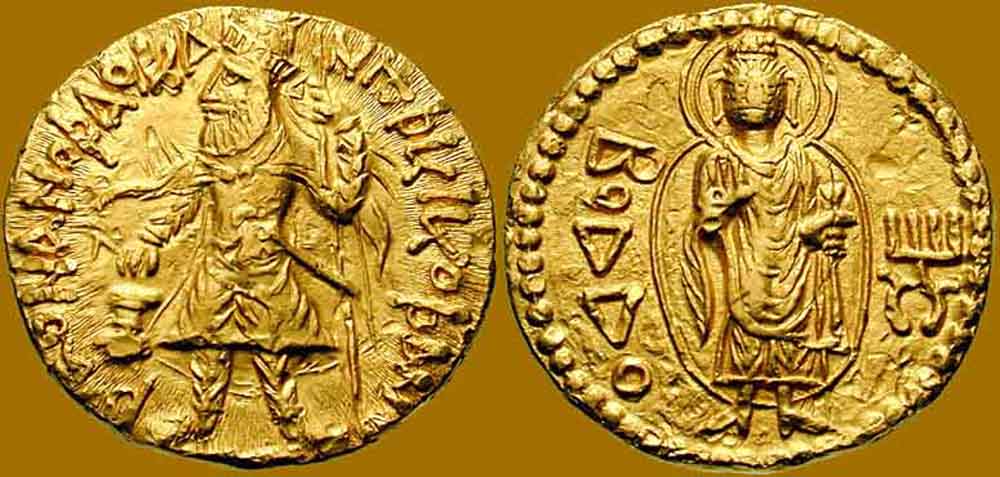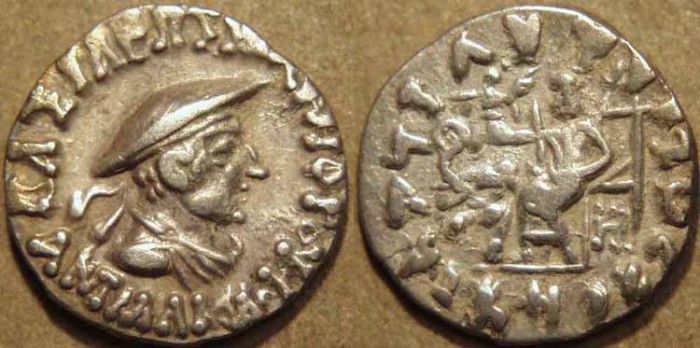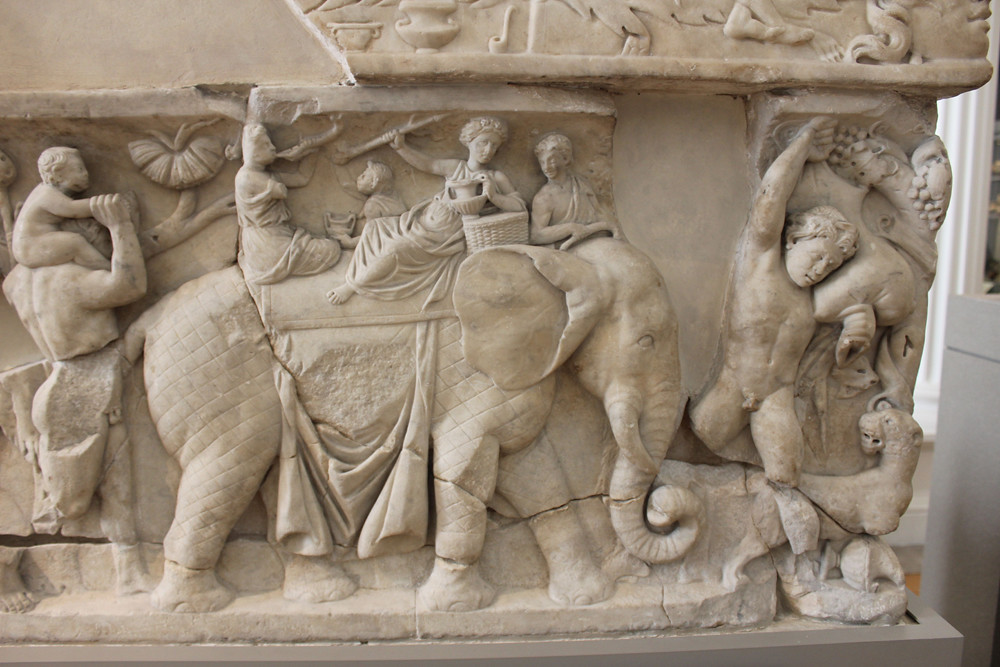In antiquity, modern-day Punjab was called Pentapotamia ( Five Rivers, in Greek. ) A large number of Greek cities were built there- the oldest of them was Dionysopolis, built by Greek God Dionysos. Dionysos had done a campaign to India prior to Heracles and Alexander the Great ,followed by Thracian and Macedonian warriors.
Dionysos conquered India and the entire Asian continent 6451 years before Alexander.
Dionysos conquered India and the entire Asian continent 6451 years before Alexander.
Dionysus on a chariot drawn by tigers- the animals tied to the chariot signify his conquest of India.

























































